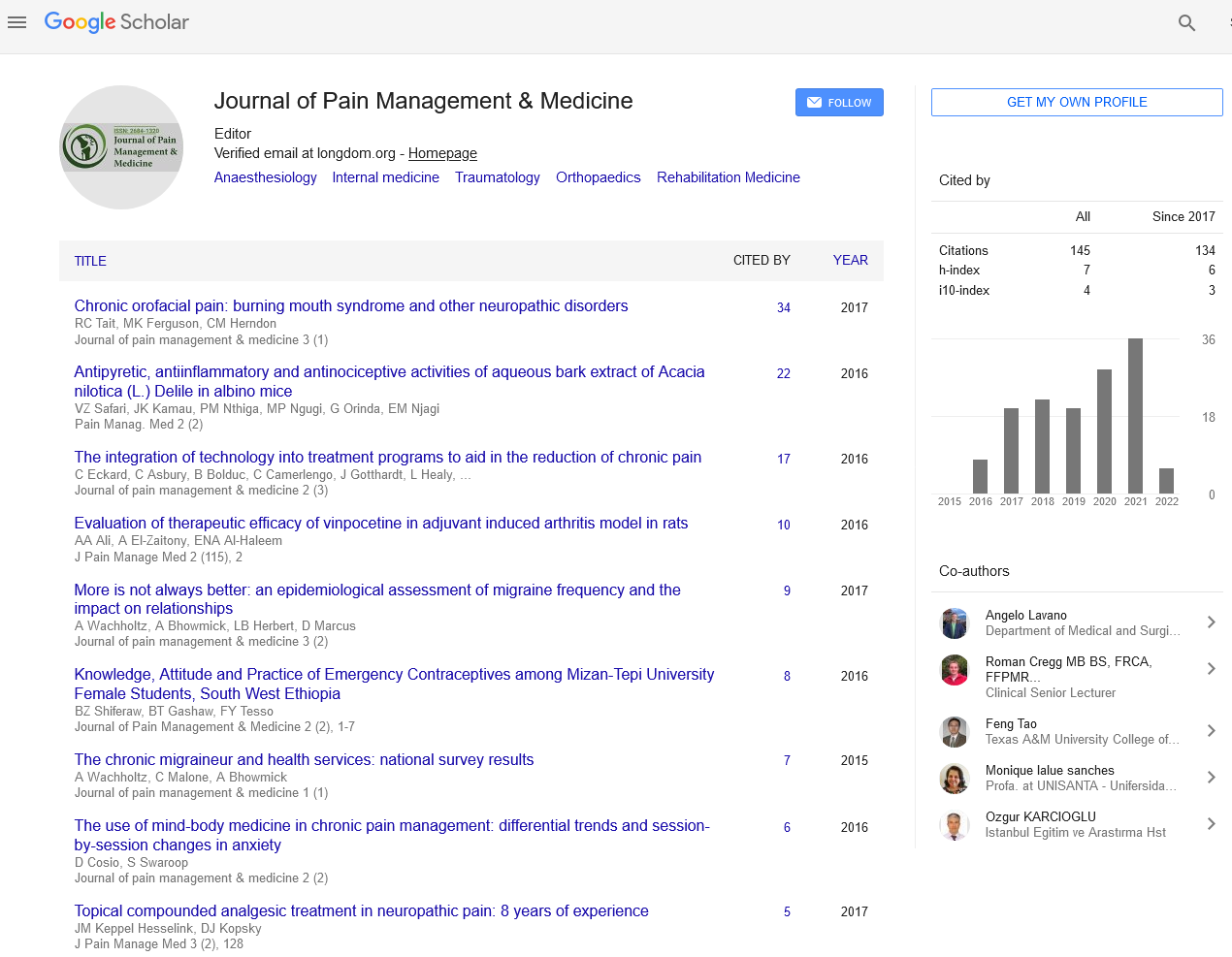Indexed In
- RefSeek
- Hamdard University
- EBSCO A-Z
- Publons
- Euro Pub
- Google Scholar
- Quality Open Access Market
Useful Links
Share This Page
Journal Flyer

Open Access Journals
- Agri and Aquaculture
- Biochemistry
- Bioinformatics & Systems Biology
- Business & Management
- Chemistry
- Clinical Sciences
- Engineering
- Food & Nutrition
- General Science
- Genetics & Molecular Biology
- Immunology & Microbiology
- Medical Sciences
- Neuroscience & Psychology
- Nursing & Health Care
- Pharmaceutical Sciences
Abstract
Three-Dimensional Visualization of Ligamentum Flavum Relative to the Affected Spinal Nerve Root by MRI/CT Fusion Imaging: Three Case Reports of Lumbar Radiculopathy and Motor Palsy
Junji Kamogawa, Osamu Kato and Tatsunori Morizane
The objective of this study was to introduce a technique that enables the virtual anatomy of the ligamentum flavum (LF) to be assessed using 3D magnetic resonance (MR)/computed tomography (CT) fusion images that show the compression of the lumbar nerve root by both the herniated disc and the LF at the lateral canal zone or the foraminal zone in patients with lumbar radiculopathy or motor palsy. MR and CT images were obtained from three patients with lumbar radiculopathy with or without lower limb motor palsy. The most important characteristic evident on the images was flattening of the nerve root related to the LF, likely resulting from degenerative changes. Occasionally, the LF may play a role in root compression. In cases of motor palsy secondary to a herniated disc, the affected root was compressed with tortuosity. The flattened portion of the root seemed to change the angle of its path. In the case with lateral canal stenosis, the root was observed to be compressed between the disc and LF, resulting in constriction. In the case of degenerative lumbar scoliosis, abnormal complicated paths are seen as a result of vertebral rotation, which can change the angle of the nerve root path twice. The 3D MR/CT fusion imaging technique enhances visualization of the pathoanatomy in an otherwise blind area in the lumbar spine that is composed of the root and intervertebral foramen. Clinicians can more clearly identify the narrowest portion of the root using this 3D visualization of both the LF and disc.


